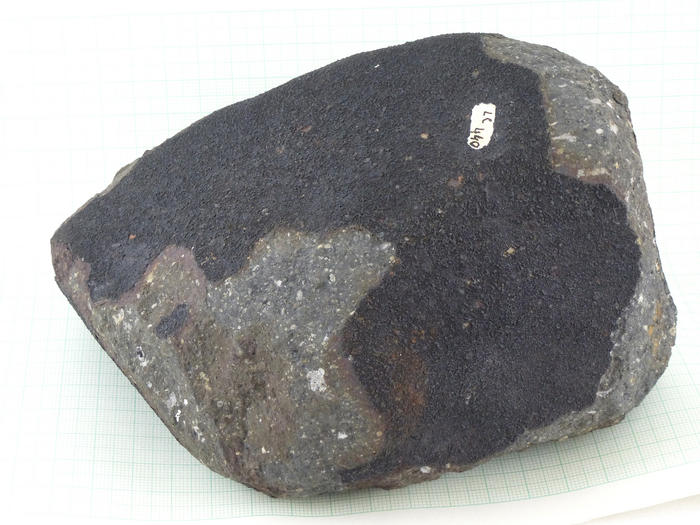Case 2: Carbonaceous and Ordinary Chondrites

Allende
Carbonaceous chondrites comprise the most diverse class of chondritic meteorites. There are five major groups, derived from five separate asteroids, that appear to reflect processes that occurred in the solar nebula: CI, CR, CM, CO, CV-CK. Each group has a distinct set of chemical and textural properties, including the abundance of refractory lithophile elements (chemical property), and a narrow range of chondrule sizes (physical property).
The top shelf contains Gao-Guenie (b) (CR2) [found in Burkina Faso in 2002], Leoville (CV3) [found in Decatur County, Kansas in 1961], Colony (CO3) [found in Washita County, Oklahoma in 1975], Moapa Valley (CM1) [found in Nevada in 2004], Murchison (CM2) [fell in Australia in 1969], NWA 060 (CK5) [found in Northwest Africa in 2000] and Allende (CV3) [fell in Chihuahua, Mexico in 1969].
One of the principal components in all chondritic meteorites except CI chondrites are chondrules, typically sub-millimeter-size igneous spherules, that formed as molten or semi-molten silicate-rich droplets in the solar nebula. Shelf 2 contains some chondrules mechanically separated from the Bjurb�le, an L/LL4 ordinary chondrite [fell in Finland in 1899].
The bottom of the case exhibits ordinary chondrites, the most abundant class of meteorites observed to fall (74% of falls). Displayed are cut slabs of the following ordinary chondrites: Wellington (H5) [found in Texas in 1955], Faucett (H5) [found in Missouri in 1966], Mount Tazerzait (L5) [fell in Niger in 1991], Shelburne (L5) [fell in Canada in 1904], NWA 7789 (LL3-6 breccia) [found in Northwest Africa in 2011] and Saint-S�verin (LL6) [fell in France in 1966].
Large ordinary-chondrite whole rocks are on the bottom shelf. These include al-Jimshan (H4) [found in Saudi Arabia in 1955] and Sappa (L6) [found in Kansas in 1983]. The Sappa stone retains some regions of black fusion crust.
The three groups of ordinary chondrites are H, L and LL, standing for high total iron, low total iron and low total iron � low metallic iron, respectively. One of the diagrams on the bottom shelf shows these differences in metallic iron; the other diagram shows that the ordinary chondrite group with the lowest amount of metallic iron (the LL group) has the highest amount of oxidized iron (FeO) in its constituent olivine grains.
For more-comprehensive definitions, please see the Glossary.